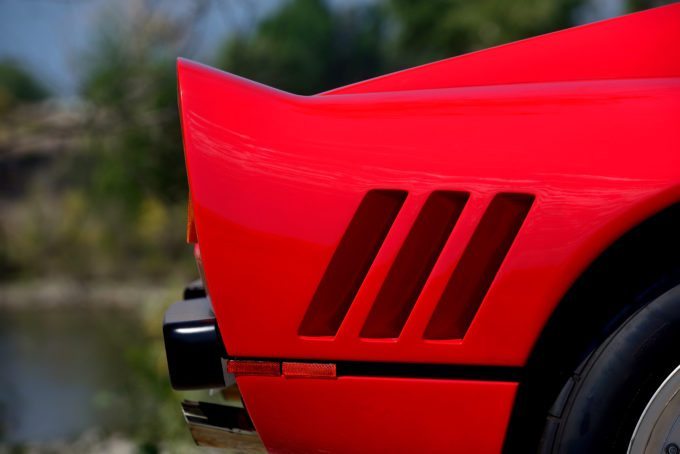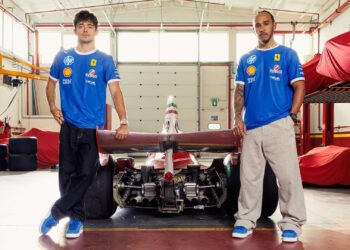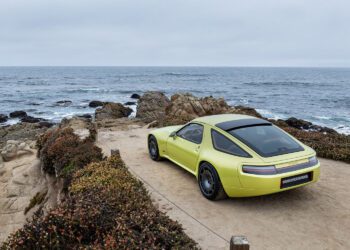If you find the electronic wizardry of the LaFerrari too complicated, allow us to take you back to a simpler time. Group B racing was one of the most popular (and deadly) forms of motorsport. Without restrictions on engine power, manufacturers turned their engineers loose to outdo each other. All Ferrari supercars in the last 3 decades have been inspired by the a contender in Group B racing, the 288 GTO. Engine size was limited for the class, so Ferrari chose a small V8 with two large turbochargers. Styling was inspired by the 308, but looks are the only similarity.
[soliloquy id=”106593″]
Starting with a tube frame chassis, the engine is mounted north-south instead of the transverse layout of the 308 & 328. With a displacement of only 2.85L you might think it would be underpowered. But being small has the advantage of revving faster than the competition. Quickly able to awaken the turbos, the factory rated power is 400 hp and 366 lb-ft of torque. The body was fashioned of race-weight kevlar and fiberglass for a curb weight of only 2,555 lbs. Offering a power to weight ratio better than most modern performance cars, the 288 GTO was a dominating force in the racing world. A series of high-profile accidents proved Group B cars were overpowered, and the series was canceled at the end of 1986.
With only 272 cars produced, the 288 GTO stands as the predecessor for the F40, F50, Enzo, and LaFerrari. Being certified by Ferrari Classiche, it has won awards at Concourso Italiano in Carmel and Concorso d’Eleganza in Italy. The odometer reads 11,980 kilometers (7,445 miles) which is incredible for the 31-year-old car. If you enjoy the art of analog driving, this race-ready GTO will be offered by Mecum Auctions as part of their primetime lineup on Saturday in Monterey.
[button color=”red” text=”white” url=”https://www.mecum.com/lots/CA0816-261992/1985-ferrari-288-gto/” window=”_blank”]View Listing[/button]
[soliloquy id=”106594″]











